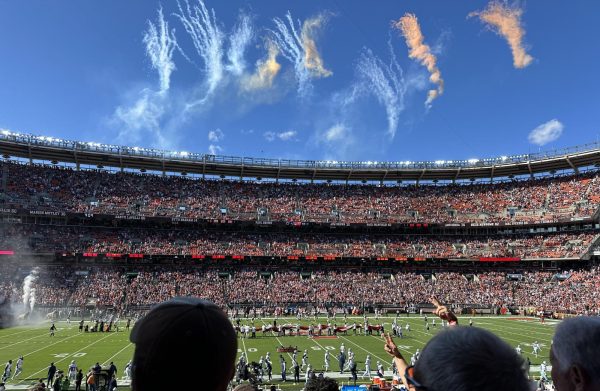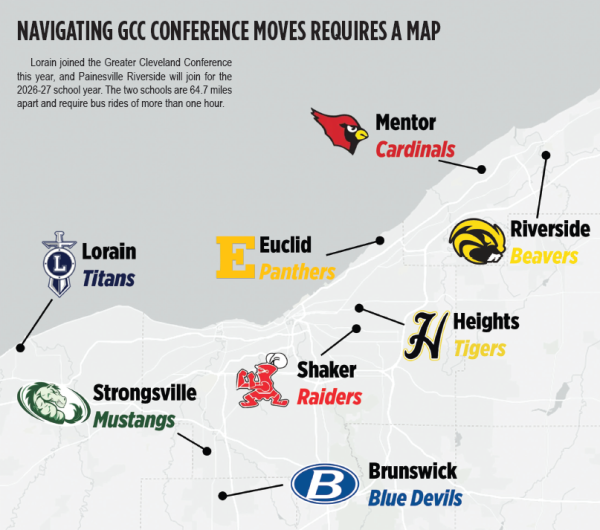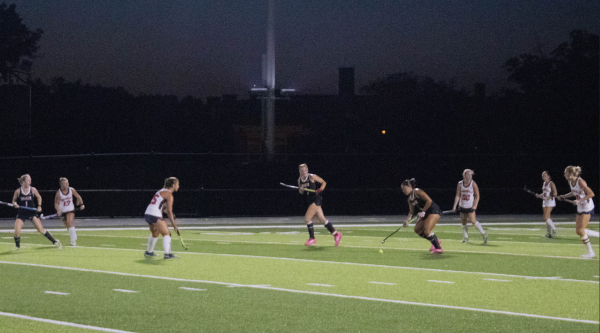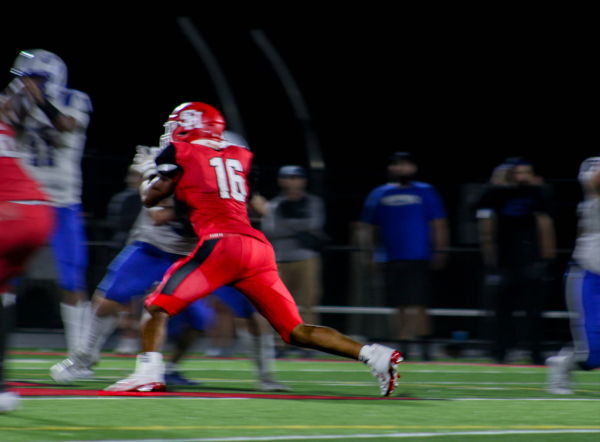Investigation Casts Doubt on Turf Fields’ Safety
The most dangerous part of soccer may not be concussions, turf burn or sprained ankles. Rather, it might be what the game is played on: turf.
According to a recent NBC News investigation, the pellets, or crumb rubber, in synthetic turf fields contain carcinogens.
The investigation questions whether goalkeepers, who tend to dive on the turf more than field players, might be at risk for developing cancers, specifically blood cancers such as Leukemia due to carcinogens contained in the turf pellets.
Raider soccer players often find themselves covered with the turf pellets after playing.
One of these players is women’s varsity goalie, freshmen Curtshanna Robinson.
“After games, it’s all in my shoes, socks, pants and even sometimes my hair,” said Robinson.
Robinson was concerned after hearing about the investigation. “It’s really scary because I have gotten turf in my mouth before while diving to make a save,” she said.
The turf pellets are made of ground-up rubber tires, which contain chemicals such as benzothiazole, butylated hydroxyanisole and n-hexadecane, all of which are known to be harmful to the human body if swallowed. Of the three chemicals, only butylated hydroxyanisole is a recognized carcinogen.
The EPA said in a statement to NBC News that “more testing needs to be done,” but that local and state governments should decide turf fields should be legal and that the agency would not commission more research.
Amy Griffin, an assistant coach for the University of Washington women’s soccer program, became concerned about the turf pellets in 2009 when she was visiting a goalie receiving chemotherapy and a nurse told the patient, “You’re the fourth goalkeeper I’ve hooked up this week.” Since then, Griffin has compiled a list of 38 soccer players in the United States — 34 of of them goalkeepers — diagnosed with cancer, according to NBC News.
Robinson thinks that goalies aren’t the only ones who are exposed to the pellets.
“There are a lot of people who come in contact with the turf pellets throughout the game besides just us goalies,” Robinson said. “But we still get the most exposure.”
Senior striker Maeve Cook has a similar experience with the pellets.
“I’ll have pellets all in my shin guards, and in my shorts and sometimes in my hair depending on how rough the game is,” said Cook.
The New York City Parks Department stopped installing turf fields with rubber pellets in 2008. A year later, the Los Angeles Unified School District did the same.
Athletic Director Don Readance is aware of the health concerns, but is not very concerned.
“They are only harmful if ingested in huge quantities, so having contact with it will not cause cancer,” said Readance. “The district looked at this issue extensively before the turf ever got put in.”
“On a scale of one to ten of me being concerned it would probably be a two or a three. I am aware of it and am sure people in the district are aware of it as well,” Readance said.
Junior men’s goalie Vincent Prochoroff is also not as worried about the possible health risks.
“As a goalkeeper, you are probably the most vulnerable person on the pitch,”said Prochoroff. “If that doesn’t worry me, then I don’t think the turf I play on should.”
“I’ve already had a serious concussion this year from being kicked in the head,” said Prochoroff. “I think I should be more worried about playing the most dangerous position on the field than the actual field we play on.” Prochoroff was forced to sit out four games this season because of his concussion.
Junior defender Evan Pascarella is also not very concerned about NBC’s reporting.
“I’m not too concerned about it. My time on the turf makes up so little of my actual time during the week that I don’t think it will hurt me,” said Pascarella. “Plus, I don’t plan on ingesting any turf pellets anytime soon.”
Robinson and Cook both felt like they would reconsider playing on turf fields if research could prove a link between turf field usage and cancer development.
“I wouldn’t want anything to happen to me while I was playing a sport that I love,” said Robinson. “I would be upset, but safety is always first.”
“It’s kind of scary,” said Cook. “I would definitely reconsider it.”
Although the article stated a possible link, there has yet to be a study that proves a direct connection between turf usage and cancer development.
The Synthetic Turf Council, the industry organization that advocates for environmentally-responsible use of synthetic turf, has conducted 14 studies on the topic and has found no definite link between turf usage and cancer.
Pascarella and Prochoroff both didn’t think the possible link would change their opinions about playing on turf fields.
“If the link was there between the turf pellets and cancer, then I would be more careful to make sure I didn’t have any on me after I played, but I wouldn’t stop using turf fields,” said Pascarella.
“I can’t do anything about the problem, and playing on turf is much better than playing on a grass field,” said Prochoroff. “I mean it’s kind of scary, but it’s not something that sends a shiver down my spine, if you know what I mean.”





